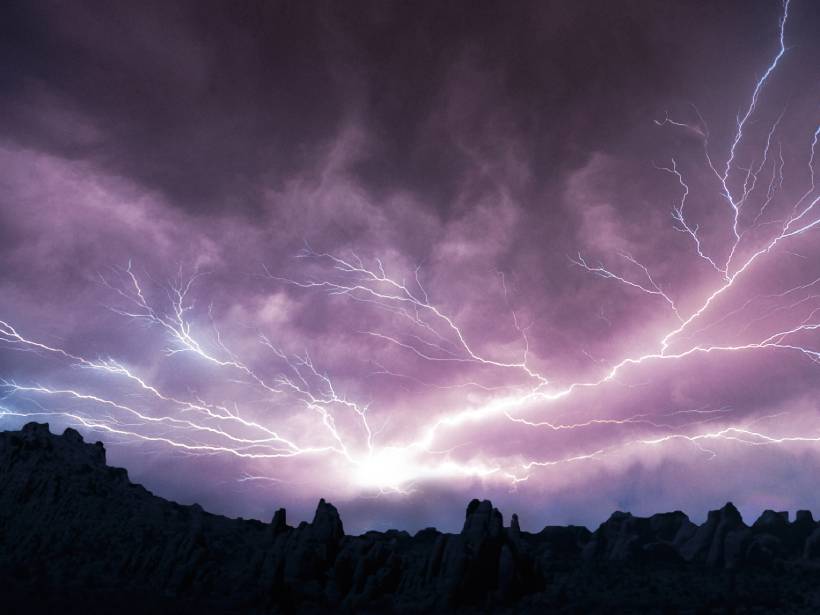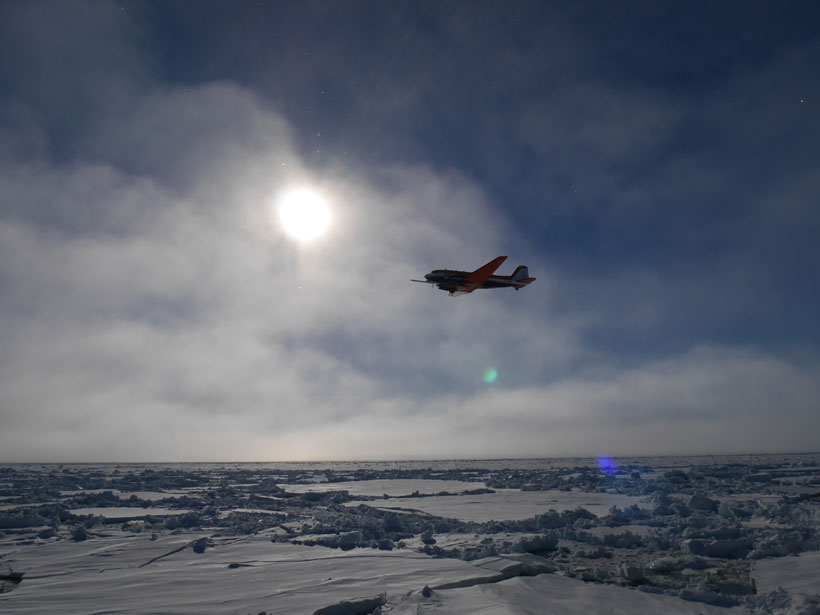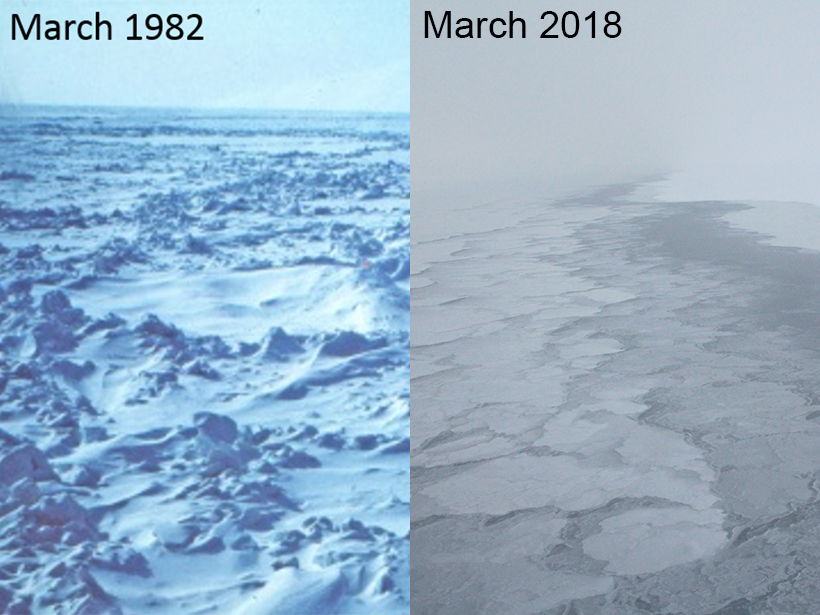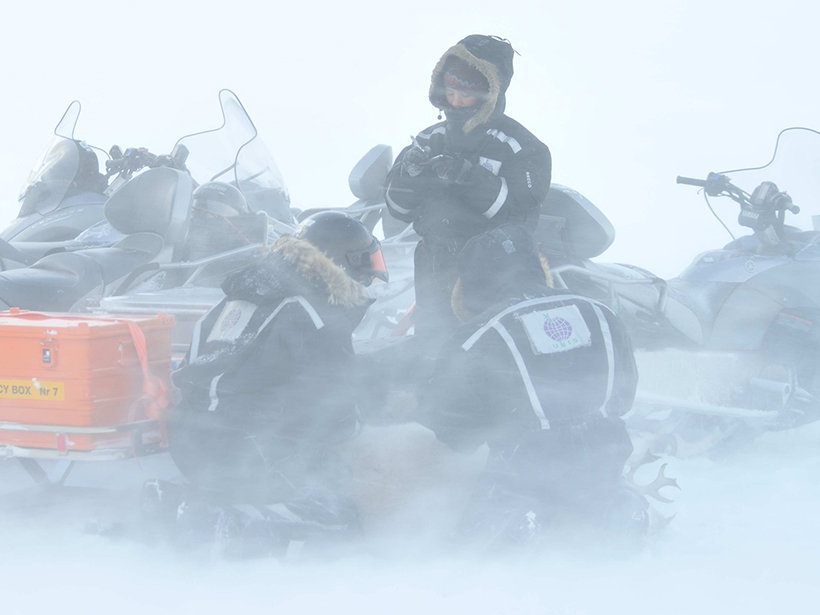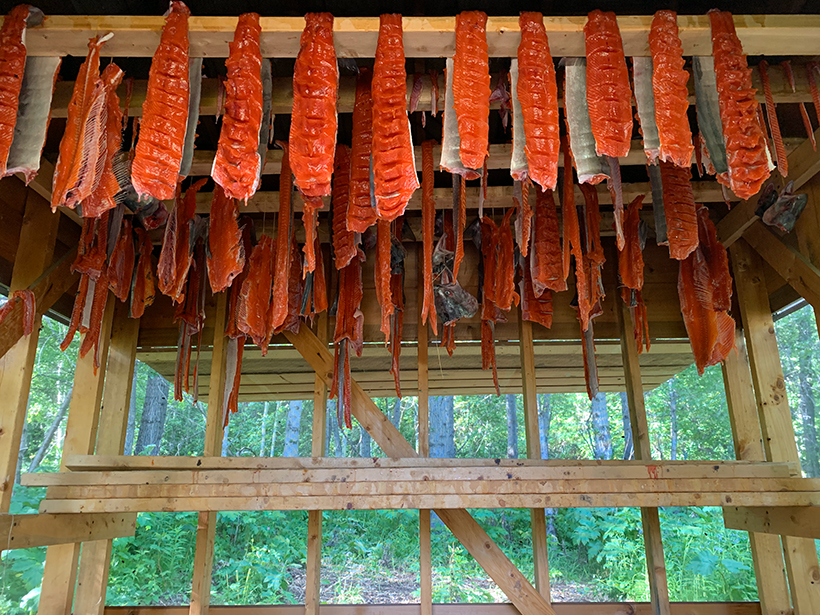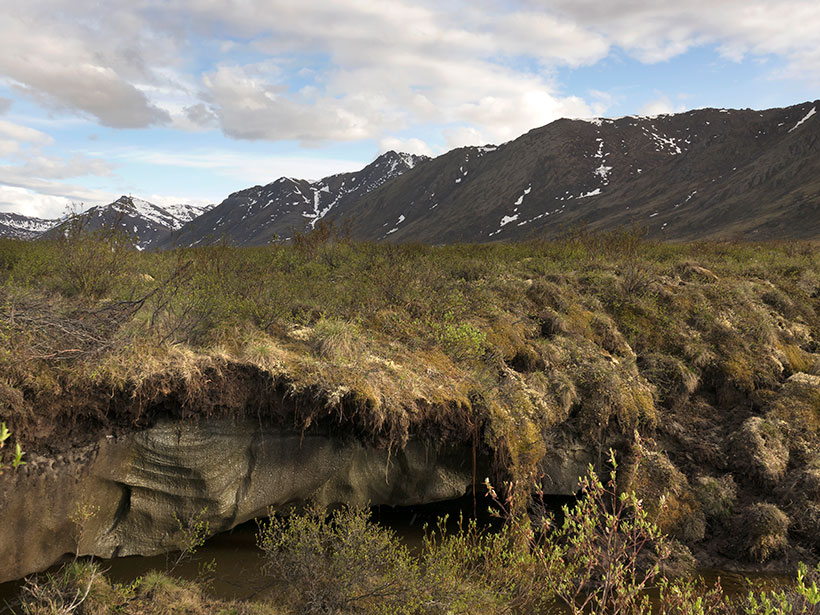Researchers have identified a high-latitude phenomenon that looks remarkably like a tropospheric hurricane, with spinning arms of plasma and a shower of electrons.
Arctic
Arctic Lightning Up 300% in One 11-Year Study
The increase may be due to climate change, researchers suggest, but the trend hasn’t been observed in other lightning data sets.
Glimpsing the Ins and Outs of the Arctic Atmospheric Cauldron
Specially equipped aircraft will follow air masses into and out of the Arctic, observing their transformations and improving our knowledge of the Arctic climate and its global influence.
Arctic Report Card Founder Discusses the Fate of the Pole
Researcher Jackie Richter-Menge has reported on the status of the melting Arctic for the past 15 years. Her observations tell a story of “mind-blowing change.”
Reindeer Have to Eat Up to Survive the Winter
Arctic biologists use 25 years of data to find that warmer autumns might be enough to increase the odds of reindeer’s winter survival on Svalbard.
The Influence of Tidal Forces Extends to the Arctic’s Deep Sea
The Moon’s gravitational pull creates the tides, but its influence extends hundreds of meters below the sea surface too, influencing sensitive methane seeps in the seabed.
Overturning in the Pacific May Have Enabled a “Standstill” in Beringia
During the last glacial period, a vanished ocean current may have made the land bridge between Asia and the Americas into a place where humans could wait out the ice.
Network Connects Indigenous Knowledges in the Arctic and U.S. Southwest
Indigenous Peoples from the Arctic and the U.S. Southwest have joined together to tackle issues of food sovereignty in two environmental extremes. Their bond led to a swift response to COVID-19.
Experimentos Revelan Cómo el Carbono del Permafrost se Convierte en Dióxido de Carbono
Muestras de campo provenientes de Alaska muestran cómo la luz solar y el hierro convierten el carbono del permafrost en dióxido de carbono. Los modelos climáticos ignoran este proceso.
Dust from Receding Glaciers May Have Major Atmospheric Impacts
New research is helping scientists understand how Arctic dust created by receding glaciers affects local air quality and global climate.


